Double Diamond Anniversary Publication
Brookwood Child Care
Founded 1833 as the
Orphan Asylum Society of the City of Brooklyn
The First 150 Years - Part
2The manual training program was successful and, unexpectedly, profitable in a modest way. Two years after its inception in 1886, the boys earned $250 from the sale, mostly at the annual fair, of tennis, crab and fishnets, large and small hammocks and dolls' bedsteads. They also caned 485 chair seats. The girls earned a like amount; selling aprons, iron holders, bags and dolls' clothing. They also found time to darn 1,344 pairs of stockings. Later on, the boys would graduate to cabinet work and advanced types of carpentry, shoelace "tagging" and shoe repairing, which last, incidentally, saved the organization $500 a year. The girls added pillow cases, sheets, bibs and wash cloths to their list.
Together with the small annual fees paid by people to whom children had been indentured, a portion of the profits from the sale of handicrafts was set-aside for the young people's future. In one typical year, there was $2,600 on deposit in 61 separate accounts in the Dime Savings Bank and the Seaman's Bank.
While some of the managers still had mixed feelings about sending children to far-off places, most of the letters coming back to Brooklyn were enthusiastic. A boy named George was happy that another Asylum lad had been sent to a home only ten miles away, which he’d, visited "on horseback and in the wagon." He was also learning to chop wood. "We killed sixteen hogs this winter," he wrote, "and made jelly out of their feet and ears and helped make lots of sausage meat." Another boy who had "inherited vicious propensities found a home in the West, and Bennie's "new mother" wrote, proudly, that he was "energetic, truthful and honest."
The 50th anniversary, on May 17, 1883, was observed with little fanfare. An epidemic the previous summer that resulted in 11 deaths and kept four doctors busy tending as many as 65 sick youngsters at one time had dampened spirits. Too, an unusually large number of children had left the Asylum, including 18 adopted and 19 sent West, and the population was down to 281, a significant decrease. The decision had been made "not to extend the work, but to deepen and perfect it:' and the number of residents would thereafter be stabilized at the 300 level, only occasionally going as high as 325.
Between 1890 and the turn of the century, life on Atlantic Avenue was, by and large, serene and productive. Even the great measles epidemic of 1894 caused little alarm. No one died, and the hospital wing built ten years earlier easily accommodated the 96 afflicted youngsters. A telephone, installed in 1890, "despite the added expense" of $60 a year, also helped during what, in former times, would have been a calamitous visitation.
Oddly, the consolidation of Brooklyn with the other boroughs of Greater New York in January 1898, was not mentioned in the report for that year, nor was the Spanish American War, although 50 of the older boys enrolled in the "Elwell Cadets" would surely have done something special to mark the conflict. The cadet corps, named for James W. Elwell, a well-known attorney and a member of the advisory board who donated the uniforms and equipment, was formed in 1891 to give youngsters elementary training in military drill, as well as healthful outdoor exercise. It would be a much-admired and popular part of the Asylum program for the next 50 years.
Interestingly, in the last year of the old century, a large oil painting of Ann Sands was willed to the Society by her great grandson, Charles A. Sands of East Orange, New Jersey. The canvas painted shortly before she died in 1851, portrays an aged but alert-looking nonagenarian in an old-fashioned white bonnet. It still graces the Society's Brooklyn headquarters office.
The first year of the new century was remarkable, not for milestone-type predictions of growth and progress, as might have been expected, but for an "extraordinary" $8,000 repair bill. The building, due to age and constant wear and tear, needed extensive renovation inside and out, including major plumbing and lighting
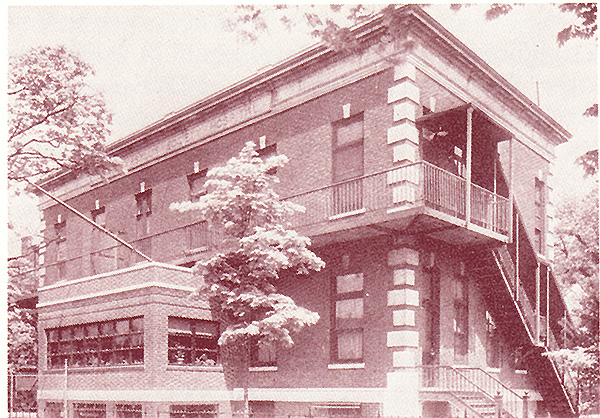 The "new" hospital was built in 1911
The "new" hospital was built in 1911
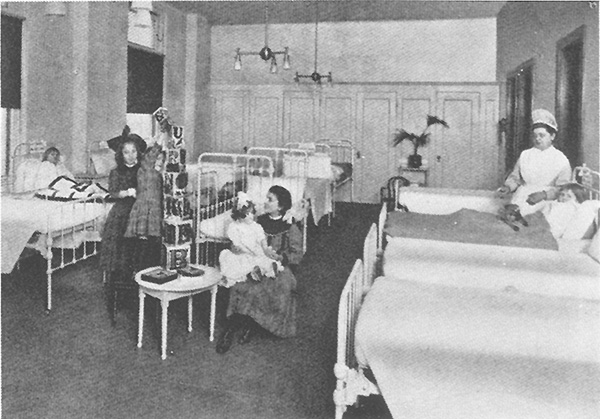 A quiet day in one of the wards,
A quiet day in one of the wards,
11
--------------------------------------------------------------------------------------------------------------------------------------
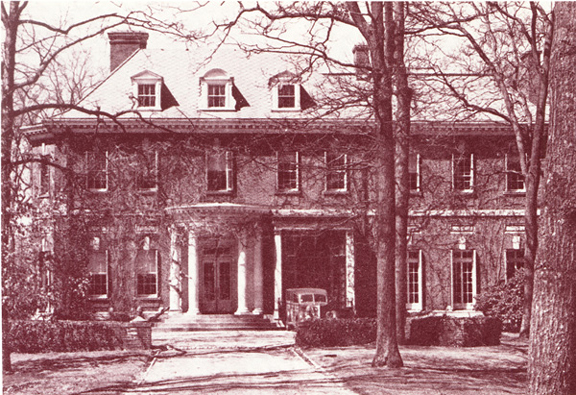
Brookwood Hall, East Islip, became the Society's fourth home in 1942.
changes and a costly re-slating of the roof. In addition, to comply with recent Fire Department regulations, an automatic alarm system connecting the Asylum with a nearby engine company had to be installed, and the main water supply pipe, by now irreparably rusted, had to be replaced. As it turned out, the cost of repairs and the replacement of furniture and equipment, while the amount varied from year to year, remained a substantial expense item until the building was finally sold 40 years later.
In 1900, the constitution was amended, once again, this time to provide for the creation of a 12-member "Investigating Committee" empowered to check on the references of applicants, visit the applicants themselves and look into cases of delinquent payment. Life was becoming more complex and, inevitably, more unprincipled. "Unpleasant as it is to know human nature in some of its phases," the managers asserted, "it has to be done and only in this manner, by direct contact, can we be sure of giving assistance with discretion."
The report for that year, perhaps in tacit recognition of the dawning era, was issued with a rather stylish gray-black cover that omitted the engraving of the first photograph of the building that had adorned every cover since 1874. Instead, an up-to-date picture appeared as a full-page frontispiece, and six more of the same size, reproduced by the new half-tone process, illustrated the text. These early photographs have an evocative, un-posed quality. They seem to have captured, touchingly, the essence of the time and the place: a dormitory with children in bed or kneeling in prayer; a corner in a hospital room with four small patients and their concerned adult attendants; the cadets in jaunty formation; girls absorbed in their needlework and boys busily mending shoes and caning chairs.
There weren't any pictures, then or later, of youngsters in their classrooms, but education was still a top priority, and the Society was quick to adapt to current advances in theory and practice. In 1903, for example, there was "a radical change" when 50 of the older children were enrolled in the "grammar grades" of a neighborhood elementary school. A few years later, older boys and girls would routinely go to academic and manual training classes in local high schools, and one youngster, breaking ground, would study art at Pratt Institute.
Starting in 1906, asylum teachers, like their counterparts in the public schools, had their hours shortened, their pay "equalized" and were given July off, as well as August, "an innovation that they appreciated," but which also raised a troublesome question: What to do with 300 lively boys and girls during such a lengthy period of free time? The "vexing problem" was solved a year or so later when the Board of Education sponsored, on Asylum grounds, an unprecedented summer playground program of sports, games, dramatics, music, dancing and handicrafts.
12
-----------------------------------------------------------------------------------------------------------------------------------------------------------------
The Society could also take credit for "extending a helping hand" to retarded and "defective" children when it initiated, in 1910, an experimental class that soon developed into a weekly program to give as many as 24 children at a time the special training that "in former years was left to physicians and athletes."
Cultural horizons continued to expand during the early nineteen-hundreds. The motor vehicle, a novelty in 1903, was almost commonplace by 1913 when 175 Asylum boys and girls went by car to Coney Island, courtesy of the Long Island Automobile Club. The kids were going to Manhattan more often, too. Every spring, they went to Madison Square Garden, then at 23rd Street, to see the circus and, once, to a Buffalo Bill show. They attended services at historic Trinity Church, visited Ellis Island, marveled at the 42-story Singer Building and probably gaped at iron workers completing the upper floors of the even loftier Woolworth Building. The Panama Canal was much in the news in those days, and the children examined a scale model of it at Abraham and Straus. They went to Ebbetts Field a lot as guests of the Brooklyn baseball team, the "Superbas," later the Dodgers, and there was always something doing at the Academy of Music, in Prospect Park and at the Botanic Garden.
At home, the "family" celebrated its 75th anniversary in 1908 with a number of gala events, and had a set of commemorative dinner plates made in England by Plummer. In 1911, the new hospital, a handsome, two-story, redbrick structure, separate from the main building, "opened its welcoming doors." The following year, everyone mourned the death, on April 15, of an alumnus, a young man who went down on the Titanic.
The conflict in Europe raised "grave issues of the Old World" and, in 1915, the managers wanted the children to understand "that right, not might, is the glory of any nation." When the country went to war in April 1917, the asylum went, too, in spirit. The children participated in parades and rallies, and paid visits to Fort Hamilton and the Navy Yard. The Elwell Cadets won first prize in a drill competition sponsored by the Brooklyn Daily Eagle. The girls, working as a Red Cross auxiliary unit, made thousands of surgical dressings, doubtless hoping that their handiwork wouldn't be needed by any of the asylum "graduates" who were in the armed forces. (12)
The year 1918 brought peace to the nation and an accolade to the asylum. A District Superintendent of Schools, after an official visit, said the Society should be proud of its work and that "it is the best state aided school I have ever inspected." The following year, though, another far-reaching policy change occurred when the asylum officially became an annex of Public School 93, a development that saved a considerable amount of money in teacher salaries.
The postwar years were prosperous. While donations obtained through Protestant Church congregations had been gradually diminishing since the beginning of the century, other sources of revenue, both public and private, made up the difference. Legacies had become important around the middle of the previous century, and the money bequeathed was wisely transferred to an endowment fund, with only the interest on the principal used for operating funds. By the mid-twenties, the endowment-substantially increased by generous bequests in those prosperous times-was generating more income than any other revenue source. (13) Illustratively, church collections in 1909 amounted to $3,853 while invested endowment money produced $8,289. Twenty years later, the contrast was much sharper, with church receipts down to $817 and endowment income up to $76,206. People probably weren't attending services any less frequently, but the pattern of charitable giving seemed to be changing
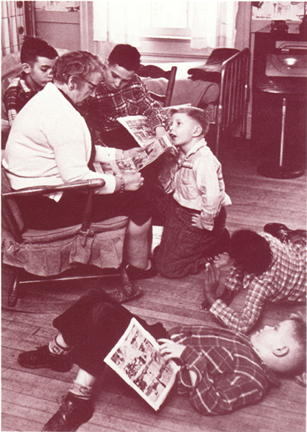
Relaxing on Sunday morning
13
-------------------------------------------------------------------------------------------
The high point in legacies received came in 1926 with a bequest of $250,200 from the estate of Charles E. Perkins. Two other large bequests in excess of $80,000, one in 1920 and the other in 1928, helped swell the endowment fund. During the period, the yearly fairs also did very well financially, with record receipts of $13,269 in 1927, including advertising revenue from the Annual Bell, the asylum paper published in connection with the fair since 1876, the country's centennial year.
Outdoor activities, especially during the summer, now accounted for most of the children's free time. Camping, something of an experiment in 1924 when a dozen or so boys spent two weeks at a lake near Bear Mountain, rapidly became a major program that, within a couple of years, would empty the Asylum in July and August.
During the other seasons, there were programs at the Y.M.C.A., which was liberal about providing memberships without charge, all kinds of sports (at one time there would be five baseball teams and basketball scores would be recorded in annual reports) and membership in asylum-sponsored Boy and Girl Scout troops. A band, initially composed of 15 boys and 15 girls, was formed in 1927. It was named after Edwin Gould, the noted philanthropist who would come to be called the Society's "most valued friend" because of the countless benefactions made during his lifetime and, by legacy, after his death in 1933.
On the whole, the depression years treated the asylum less harshly than otherwise. New legacies were scarcer, their amounts smaller and the interest from endowment fund investments declined to some extent. On the other hand, payments by the city for care and maintenance were up, reflecting the growing number of children referred by the Welfare Department, although the over-all population-as a matter of prudence-was kept down to about 200 at a time, a manageable number.
In a 1941 report, released after a general inspection-the first in five years-the State Board of Social Welfare complimented the Society on the fact that the children were well clothed and well fed. The inspectors also commented that "expenses have been held at a surprisingly even level ... and the amount from investment funds has held remarkably well."
The 1930's turned out to be a time of transition. By now, government was concerning itself, to an unprecedented degree, with the welfare of the individual. As a result, charity-at least charity of the kind that satisfied elemental human wants-was becoming more and more a partnership function between the private and public sectors. At the same time, the advances made in public health and medicine since the Civil War had reduced, year by year, the number of orphans needing shelter. Children, it was now widely recognized, needed help for many reasons other than loss of parents.
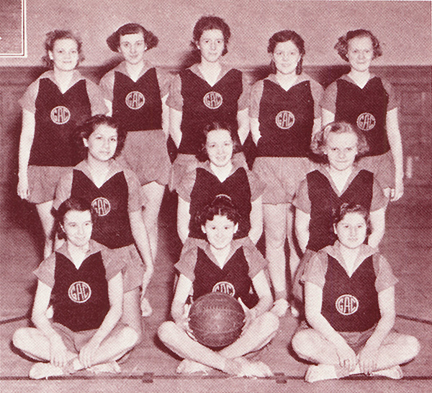
The junior girls' basketball team.
The Society, once again, reacted to new currents in American life. In 1935, it engaged a professional social worker who, in her first formal report to the board, was careful to point out that "our responsibility to the child does not end with giving him a happy environment, good physical care and educational opportunities." A year or so later, children were routinely being given psychological tests, and psychiatric treatment-a new-fangled notion at the time-was made available.
The Society was a hundred years old in 1933, and the centennial was celebrated in May with a gala pageant attended by a "large gathering of friends." Earlier in the year, an 80-page commemorative booklet had been published. In addition to a historical summary, it contained an invaluable store of details on the genealogy and the interrelationships of many of the key people associated with the organization over the years. Describing the role of the Dana family, for example, the report's author states, with obvious pride, that "in its hundred years, the Orphan Asylum has had but four legal advisors, all in one law firm and practically all in one family."
In December, 1941, the asylum went to war again. A defense program was speedily developed by the new executive director, the first person to hold the title. (14) It included blackout rules and procedures to be followed in case of an air raid. And, if the community needed it, the asylum was "ready and able to offer shelter and assistance to at least 150 additional adults and children. Another 75 people could be accommodated in the hospital, and there were beds, blankets and enough emergency food for two weeks.
14
--------------------------------------------------------------------------------------------------------------------------------------------------
Fortunately for the community, it was never obliged to accept the offer which, in any case, would have been withdrawn in the fall of 1942 when the managers suddenly-or so it appeared -vacated the premises, putting most of the furniture and equipment in storage, and moved some 60 children-fewer than half the number of those in residence the year before-to a new home in the country. Almost simultaneously, the War Department, which had just rented the property to house Europe-bound Army units, moved in to make the necessary conversion.
While the actual physical transfer was carried out in a matter of ten hectic days, the decision that motivated it was by no means precipitous. For a long time the managers, now called directors, had been disturbed by the never-ending and ever-larger repair and renovation bills to patch up what had become, in 70 years, an antiquated building. They also firmly believed that city children would benefit greatly from a healthier and, certainly, different environment. Implicit, too, was the idea that the quality of service-given the same financial resources, could be measurably bettered if fewer children were involved.
So, in June 1941, having decided that a move was imperative, the Board put the property in the hands of real estate agents and formed a committee to search for a suitable site, preferably on Long Island.
They found their site the next summer near East Islip in Suffolk County in the form of a 52-acre estate "with beautiful lawns, trees, gardens, a large lake and suitable buildings." It was conveniently located 50 miles from New York City and easily accessible by automobile or the Long Island Rail Road. The Town of Islip had the requisite schools, churches and other amenities.
The children in the initial group adjusted readily to the semi-rural atmosphere, evidently not minding the inconvenience that extensive alterations must have caused. They went right to work planting the first of several Victory Gardens that would supply the household with fresh vegetables during the war and for many years afterwards. And they must have been looking forward eagerly to the skating, swimming, boating, fishing, picnics and the use of the playgrounds and athletic fields that the spacious grounds would soon make possible.
The new place was christened "Brookwood Hall " a name that linked the asylum's past urban association with its present countrified one. But the Society had never really left home. During the East Islip years, while children from Nassau and Suffolk were admitted, the largest contingent still came from the city.
In fact, after the war and because of the demographic changes caused by it, the number of deprived and dependent kids was greater than ever. Mostly, they were black and mixed race, "orphans of the living," that a future executive director would describe as "victims, once removed, of the intractable bigotry, brutal in difference and naive complacency that have brought our society to the point where the danger of violent explosion is very real." They were children who needed help just to grow up. The Society was prepared to give it.
In 1951, the Child Welfare League of America, the national standard-setting body, after making an in-depth survey, recommended the establishment of a foster care department. Fortuitously, the Society had moved its executive office to larger quarters in a brownstone house on Adelphi Street in Brooklyn's Fort Greene section a couple of years earlier. There would be space enough to accommodate the additional staff members that development of a major foster care effort would demand.
And demand it did, because the program expanded rapidly. The first child affected, a boy, was placed in a Nassau County home in late 1952. Twelve years later, there were 157 children in 69 licensed foster homes, mainly in Brooklyn and Queens. And as the primary service priority changed, income ratios changed with it. In 1963, payment for care of children at the residence was negligible compared to the $400,000 received from the city for the maintenance of children in foster homes.
The economic facts, alone, were compelling. Brookwood Hall was closed in the summer of 1964, and for the first time in 132 years, the Society had no large number of children to care for in one large place.
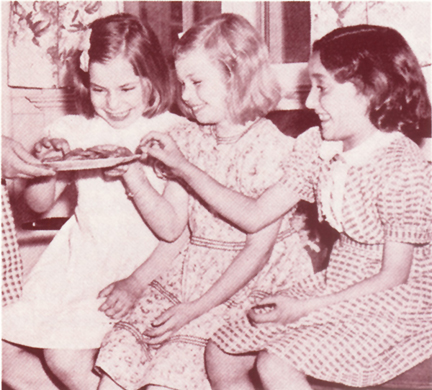
Cookies were on the house.
15
------------------------------------------------------------------------------------------------------------------------------------------------------------------------------------------
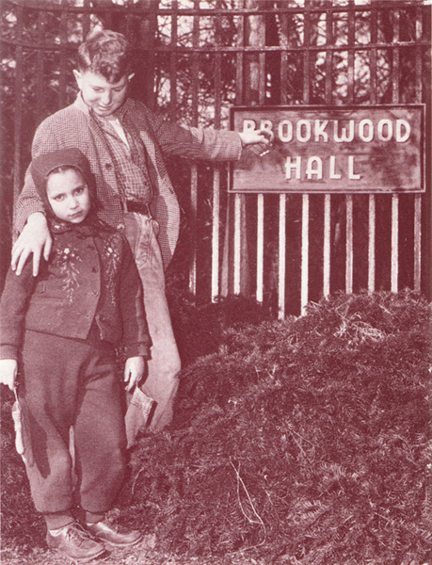
The way they looked in 1951.
Even the old name had been changed when the Board, in 1952, adopted the operational name, "Brookwood Child Care," because it was more descriptive of the work being done, although the original title was retained for legal and historical purposes. The organization itself, would thereafter be called an "agency," but the Society would remain the fundamental governing entity that would supply the members elected to the board of directors.
More than likely, many of those same Society members and directors shed a quiet nostalgic-tear or two when Brookwood Hall shut down for good. But they were committed to a promising new course of action and, as a former president" would later remark, they were more than willing, eager, in fact, "to discard the outmoded and the inadequate and take chances for children."
The concept of taking chances was to become a major determinant in policy-making, and during the ensuing 19 years the agency did a great deal of experimenting and "pioneering." Every innovative approach, of course, hasn't worked out, but in the few instances in which programs have been discontinued or curtailed, the causes have been due, usually, to circumstances beyond control, things like recession, cut-backs in public funds and political priority-switching.
For the most part, though, programs developed during the period have been singularly durable and productive, although some have been modified from time to time in keeping with community needs.
As a case in point, back in 1965, two group homes for teenagers were opened in middle-income rental housing. One apartment accommodated eight girls, the other eight boys, and they were used as an alternative to foster care for kids with special problems. A few years later, the two units were occupied by much younger children and they were called "family residences" because their biological parents, in a radical departure from customary practice, were made an integral part of the program and encouraged to become at least part-time parents. A couple of years ago, the situation changed and the homes serve teenagers once more, with the staff taking pains to get them through high school and prepare them for independent living once they leave the agency's protection.
In another instance, the Fort Greene Children's Harbor 24-bed group residence combined with 12-bed emergency care and diagnostic unit opened by the agency in 1976, was forced to close three years later when an unexpected fall-off in referrals resulted in a serious loss of revenue from the city.
The disappearance of the Harbor, however, wasn't a disaster because the neighborhood based service structure of which it had been the centerpiece remained largely intact. In one of the residual programs, parent-child counseling, the agency now works with hundreds of children and adults in families considered in danger of breakdown. Besides individual counseling, troubled parents get help with practical matters like home management and the development of parenting skills. The purpose is prevention of placement by keeping the family unit and intact.
The Harbor emergency care unit, too, was the forerunner of the agency's present complex of emergency foster boarding homes where children -as many as four at a time-can get immediate, though temporary, shelter in times of family disruption or in situations that threaten their health and safety. When the storm is over, they are returned home or, if the crisis persists, are placed in surrogate care.
The family day care program, also a preventive measure, is always oversubscribed because hard-pressed parents who want to work or go to school to learn a trade or a special skill must have a safe place to leave their young children during daytime hours. The care is given by "provider mothers" who make their homes available five days a week.
Adoption is a really bright spot in the service mix these days. The agency's specialized department now manages to arrange 30 or 40 legal adoptions a year, a very high number for
16
--------------------------------------------------------------------------------------------------------------------------
an agency of Brookwood's size. In the past, most of the children in need of permanent homes were black or racially mixed, and few were healthy infants. Lately, there are more babies and more white and Hispanic children available. Whatever trends develop, though, the agency has declared its intention to concentrate, in the immediate future, on finding suitable adoptive homes-and foster homes, as well-for kids with multiple physical and emotional handicaps. In doing that, Brookwood will be continuing its tradition of making a pragmatic response to the realities of need.
Today, in addition to their responsibility for conducting the major programs in foster care, adoption and prevention, board and staff members concern themselves with a number of less dramatic, perhaps, but equally indispensable things. Efforts to recruit new foster and adoptive parents are constantly made. Existing homes have to be monitored in compliance with state and city regulations. The families that accepted children have to be supported and encouraged and, when starting out, properly trained. Medical and dental problems are checked. The need for psychological help has to be determined. Clothing and other allowances in this inflationary period are frequently reviewed. Finally, in addition to internal administrative and personnel concerns, there is the seemingly endless paperwork generated by the various regulatory bodies to which a voluntary agency is accountable.
Putting it all together, Brookwood in 1983 is a thoroughly modern, non-sectarian, professionally-operated, multi-service agency well equipped for its primary mission: helping children in distress. In January, 1983, the Special Services for Children division of the Human Resources Administration rated Brookwood as one of the five "best" child welfare agencies in New York City, out of the 67 evaluated, and assigned it top priority for referrals of children by the public department. The rating was earned for excellence of program, general performance and adherence to established standards.
It seemed a good way to start the next 150 years.
17
____________________________________________________________________________________________________________________________
1. In 1833, a "village" in Kings county was the conventional cluster of dwellings, commercial establishments, public buildings and churches, but the "town" was a much larger geographical subdivision, rural or agricultural in character, with scattered hamlets. Besides "Breukelen" in the Northwest, the other original towns were Bushwick to the north and Flatlands, Flatbush, New Utrecht and Gravesend to the west and south. The 1834 charter united the village and the town and, by 1896, Brooklyn had annexed all of the adjacent areas, attaining its present area of 71 square miles.
2 . The Society was granted its own corporate charter by the New York State Legislature, and the "in" of its original title was changed to of giving the Society its present corporate.
3. The first Board of Managers was made up of Mrs. Charles Richards, First Directress; Mrs. Elizabeth R. Davison, Second Directress; Mrs. Sarah E. Austin, Treasurer; Miss Mary A Cunningham, Corresponding Secretary, and Miss Harriet A. Sands, Recording Secretary. The Board of Advisors included Mr. James Engles, Mr. Charles Hoyt, Judge Leftert Lefferts, Judge P. W. Radcliffe, Mr. Eliakim Raymond, Adrian Van Sinderen, Esq. and F. C. Tucker Esq.
4. Ann Sands, born Ann Ayscough in Salem, Mass., in 1761, was the daughter of a British Army surgeon stationed in the colonies and a mother of English and Dutch ancestry. Her husband, Joshua Sands, whom she married in 1779, became the first Collector of the Port of New York and a member of the House of Representatives.
5. Many notable people among the Society's organizers and friends are commemorated today by Brooklyn street names: Butler, Carroll Crosby, Doughty, Lefferts, Lewis, Mercein, Pierpont (later changed by the family to Pierrepont), Porter, Raymond, Sands, Spencer, Suydam, Talman, Taylor, Van Sinderen and Willoughby.
6. Children admitted in the fall of 1833 were Mary and Margaret Denny, Hester and Edward Gunn, Isabella and Samuel Houston, Charlotte and Mary Jane Long, Catherine McIntyre, Amos and Mary Augusta Ryder, Walter and Samuel Stanley, Mary and Catherine Wortman, Dominick, Mary Ann and Bridget McLaughlin, Edward Nathan and Francis Nugent.
7 . Alden Spooner, a transplanted New Englander, founded the Long Island Star in 1809. The paper, a four-page weekly, was strong on education and culture.
8. At the annual meeting on May 20, a resolution was adopted expressing sorrow at the death of Phoebe Butler, "the dearly-loved and deeply-honored First Directress of our Institution. " She had served since 1859.
9. Presiding at the December 1st ceremony were Rev. Beecher, Rev. Schenck and Brooklyn Mayor Kalbfleisch.
10. The members of the Building Committee, who were also members of the Advisory Board, were James W. Elwell, John Halsey, J B. Hutchinson, E. B. Litchfield, John W. Mason and James L. Morgan, Mr. Elwell supervised the construction and Mr. Mason took care of the financial arrangements. George Hawthorne was the architect
11. The building and adjacent property were sold to the Brooklyn Homeopathic Society. The site is now occupied by Cumberland Hospital.
12 . In June 1919, 25 of "our War Heroes" attended a festive welcome-home party at the asylum. A silent toast was proposed to the memory of five who had made "the supreme sacrifice."
13 . Later in the century the ratio changed. In fiscal 1983, agency expenditures totaled $2,291,557, of which $439,350 represented investment income. Public funds for "purchase of service" made up most of the balance.
14 . Francis M. Firth. The title replaced that of "Superintendent, " which had earlier replaced that of "Matron. " Succeeding Executive Directors were Jason S. Pettengill, 1944-1949; Frank F. Maloney, 1951-1963; John D. Lyman, Jr., 1963-1982, and, since January, 1983, Mrs. Betty C. Jones.
15 . Mrs. R. Whitney Gosnell in December, 1965. The title of "First-Directress" was changed to that of "President" in 1911. Since its founding the Society has had 19 presiding officers: Mrs. Charles H. Richards, 1833-1858; Mrs. Silas Butler, 1858-1863; Mrs. James L Morgan, 1863-1864, Mrs. John B. Hutchinson, 1864-1887, Mrs. Anna C. Field, 1887-1891; Mrs. George H. Nichols, 1891-1898; Mrs. James H Thorp, 1898-1899, Mrs. Michael Snow, 1899-1903; Mrs. James Truslow, 1903-1908, Mrs. George W. Mabie, 1908-1911; Mrs. J.R White, 1911-1912; Mrs. James S. Hollinshead, 1912-1917, Miss Sophie L. Meserole, 1917-1918; Mrs. August Dreyer, 1918-1926; Mrs. Anna E. Brader, 1926-1941; Mrs. Lucy M Houghton, 1941-1944; Mrs. Gladys M. Haman, 1944-1952; Mrs. Gosnell, 1952-1970, and since 1970, Mr. Bruce H. Wittmer.
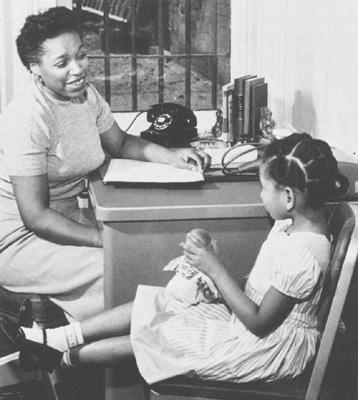 Counseling at
Adelphi Street
Counseling at
Adelphi Street
OFFICERS (As of 1983)
Mr. Bruce H. Wittmer, President; Mrs. Paul B. Woodfin, II, First Vice President; Mr. Ellsworth G. Stanton, III, Second Vice President; Mrs. E. Onken Beery, Third Vice President; Mrs. William B. Falconer, Jr., Recording Secretary; Mrs. George M. Onken, Corresponding Secretary; Mr. Joseph J. Capra, Treasurer; Mr. Edward R. Hunt, Assistant Treasurer
SOCIETY MEMBERS (As of 1983)
Mr. Richard T. Arkwright, Mrs. George S. Avery, Mr. Robert M. Baylis, Mr. John T. Burnell, Mr. Herman L. Clark, Mrs. John B. Daniels, Mrs. Dwight Demeritt, Mrs. Edmond T. Drewsen, Mr. William Ehrman* Mr. William K. Elliot, Mr. Andrew V. Fellingham, Mr. Arthur E. Flynn*, Mr. Gerard A. Gilbride, Mrs. Gerard A. Gilbride, Mrs. George E. Gosnell, Mrs. R. Whitney Gosnell* , Mrs. Dorothy P. Heindell, Dr. George L. Hogben, Mr. W. Wilson Holden*, Mrs. William E. Horwill, Mr. Charles E. Inniss*, Mrs. Remsen Johnson Jr., Mr. Edward A. Jones* Mrs. John J. Klobassa , Mr. Alfred A. Lama, Sister Mary Logan* Mr. Hamilton M. Love, Dr. Edwin P. Maynard, Jr.* Mrs. Waldo M. McKee, Mr. Theodore B. Meyerstein , Mrs. Harry L. Mirick, Mr. George M. Onken* Mr. Marshall Schwarz, Dr. Walter R. Stankewick, Mrs. Eustace L. Taylor, The Hon. William C. Thompson, Miss Marguerite S. Vollmar, Miss Ruth Wallace, Mrs. Francis E. Walton, Mrs. John Jay Wittmer
*Member, Board of Directors
18
----------------------------------------------------------------------------------------------------------------------------------------
LIFE
MEMBERS
Mrs.
Wendel P. Colton, Jr., Mrs.Rernsen
Johnson, Jr., Miss Marguerite S.Vollmar
HONORARY
MEMBERS
Mrs.
Russell T. Bailey, Mrs. Harry L. Mirick, Mrs.
Waldo M. McKee, Miss Marguerite S. Vollmer
EXECUTIVE STAFF
Mrs.
Betty C. Jones, Executive Director
CONSULTANTS
Mr.
Edward P. Beach, Financial Consultant
DOUBLE
DIAMOND ANNIVERSARY
COMMITTEE:
Mr.
Jonathan A. Clayton, General Chairman;
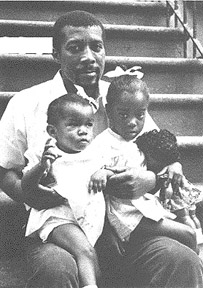 Fathers
are important, too.
Fathers
are important, too.
19
----------------------------------------------------------------------------------------------------------------------------------------------------------------
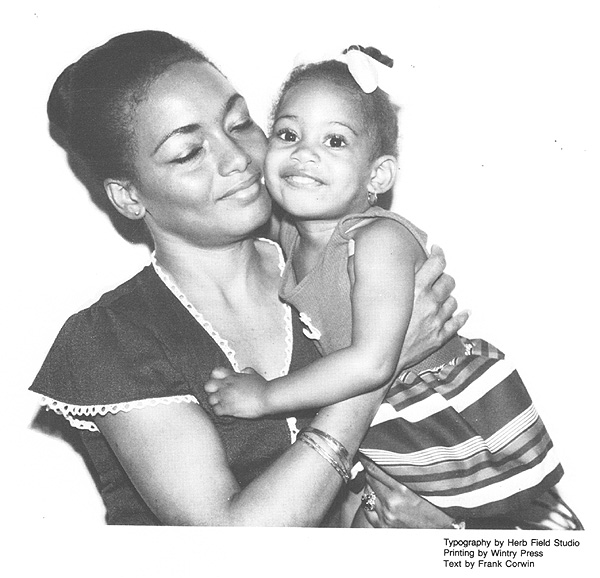
Brookwood Child Care
Typography by Herb Field Studio Printing by Wintry Press Text by Frank Corwin
363 ADELPHI STREET BROOKLYN, NEW YORK 11238 TELEPHONE 212/783-2610
Founded May 17, 1833, as "The Orphan Asylum Society of the City of Brooklyn" Incorporated April 15, 1835, by an Act of the New York State Legislature